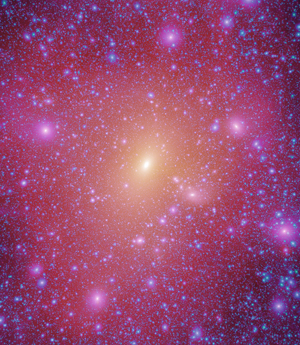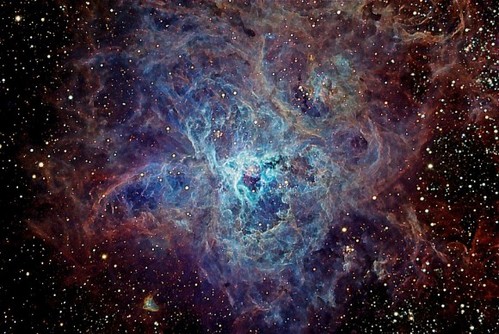
Scientists say the search for the mysterious substance which makes up most of the Universe could soon be at an end. A massive computer simulation was used to show the evolution of a galaxy like the Milky Way, and analysts were able to "see" gamma-rays given off by dark matter. Dark matter is believed to account for 85 per cent of the Universe's mass but has remained invisible to telescopes since scientists inferred its existence from its gravitational effects more than 75 years ago. If the computations are correct, the findings could help NASA's Fermi Telescope to search for the dark matter and open a new chapter in our understanding of the Universe.

Three free-flying spheres are currently zooming around inside the International Space Station. Is the crew of Expedition 18 using them to hone their light-saber battle skills a la Luke Skywalker or sharpen their ability to detect UFOs? No, these bowling-ball sized spherical satellites are part of an experiment devised by students at the Massachusetts Institute of Technology (MIT) to test autonomous rendezvous and docking maneuvers for future formation flying spacecraft. Called SPHERES – which stands for Synchronized Position Hold, Engage, Reorient, Experimental Satellites — these color-coded robots are flying inside the ISS, testing different flight formations. But these have to be a lot of fun to play with during off hours on the space station: zero-g bowling or space volleyball, anyone?

Following the fifth and final orbit raising maneuver which put Chandrayaan-1 closer to the moon, the spacecraft snapped the first picture of its final destination. This clear, crisp image of the moon While the images are still being processed and are not available yet, mission managers says the images bode well for spacecraft's mission to map the entire moon's surface with its Terrain Mapping Camera. And all systems are go for the final maneuver on November 8, which will put Chandrayaan-1 in

Just one glance at this incredible visage is enough to make you do a double take. This intricate net of nebular mists is known as 30 Doradus, or even more commonly as the "Tarantula", but no space spider created this web. No, sir. What spun out these gossamer strands of HII silk is one of the largest and most active star forming regions known to our local galaxy group.
https://www.universetoday.com/


